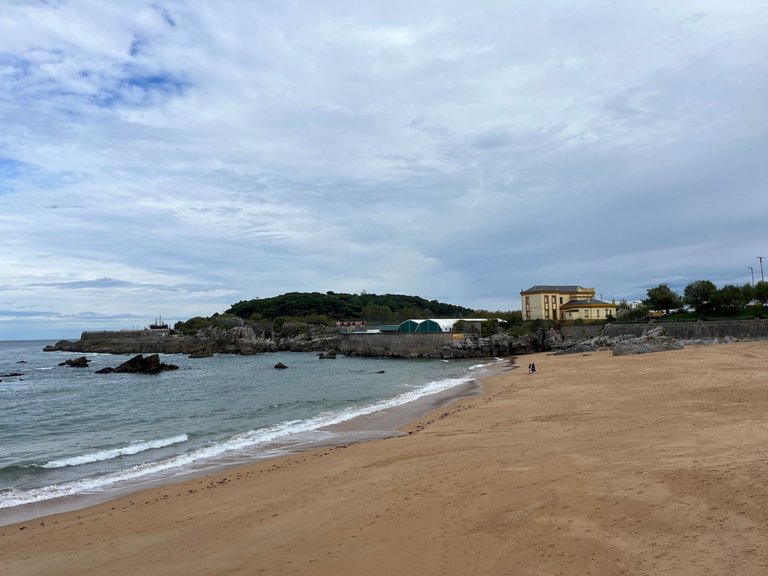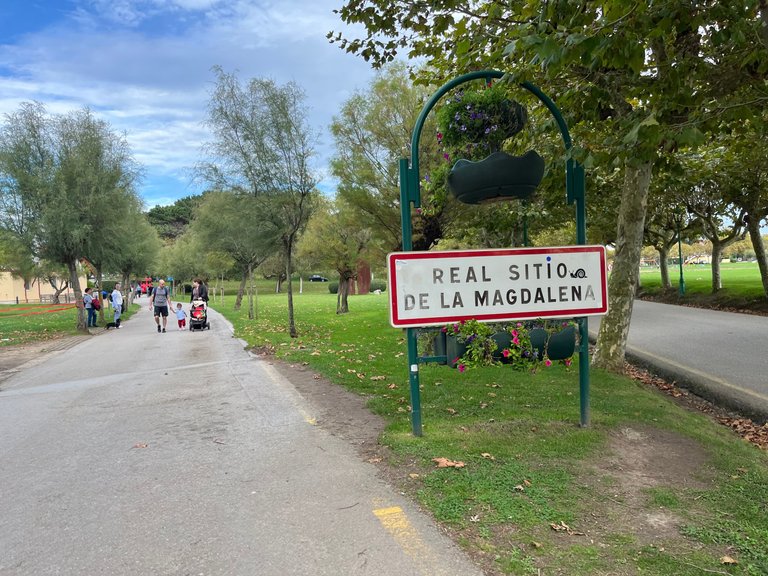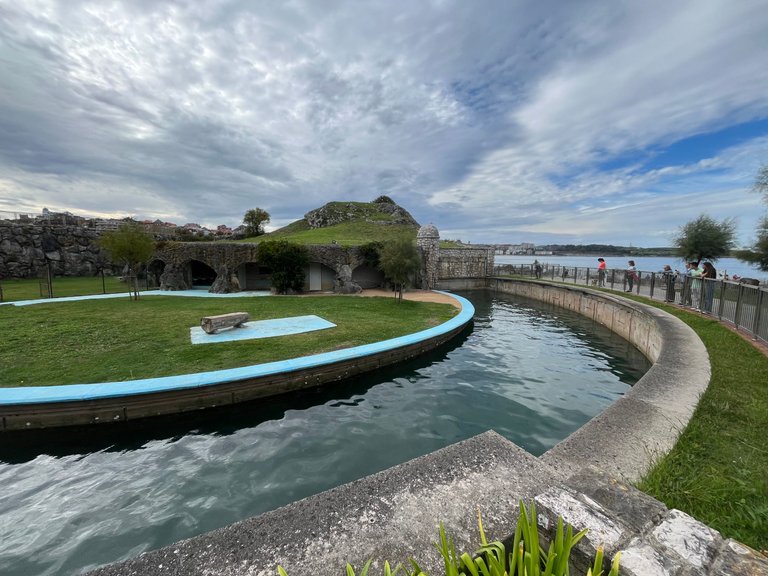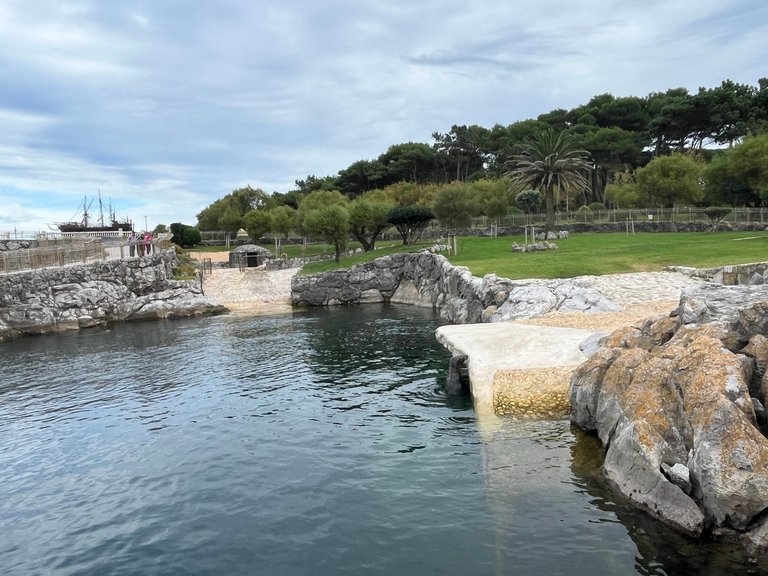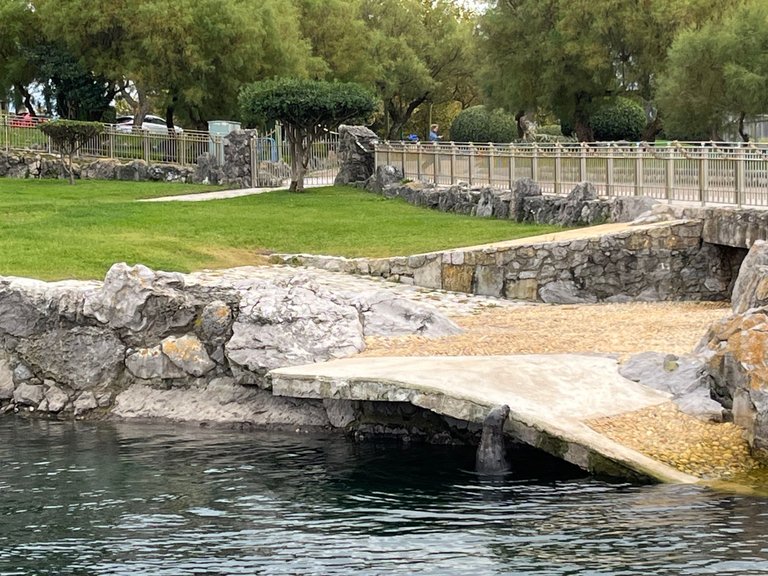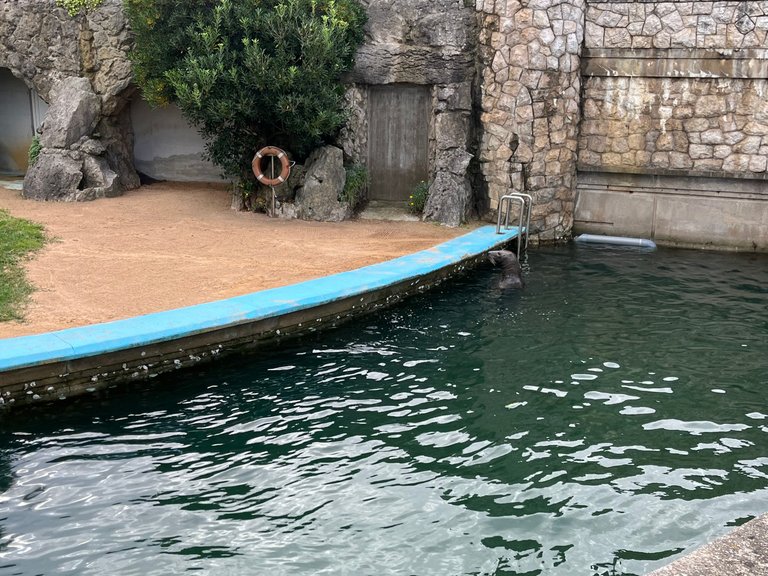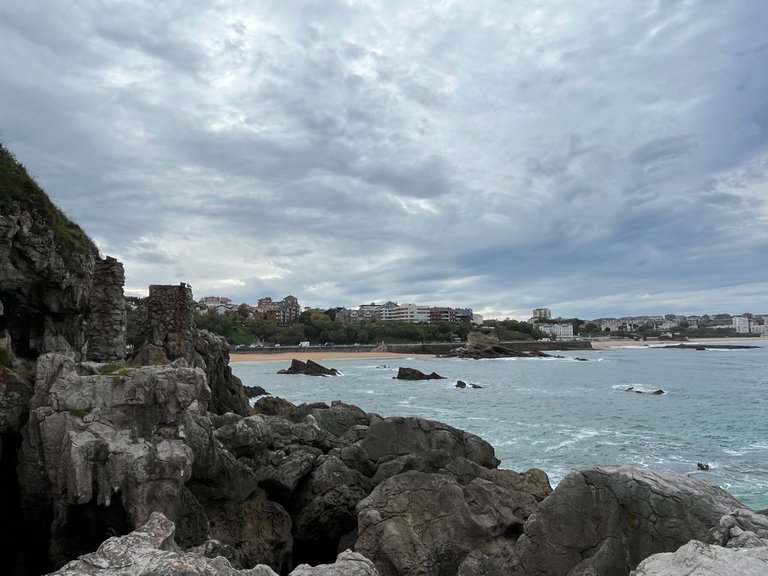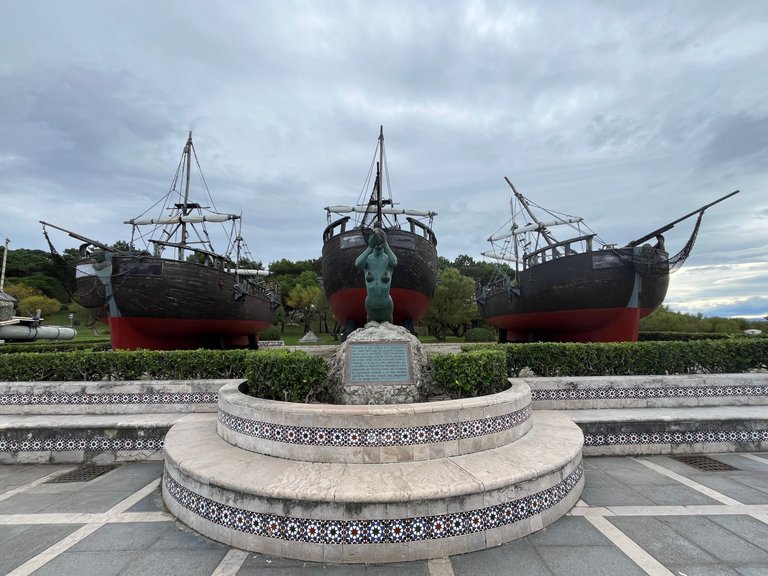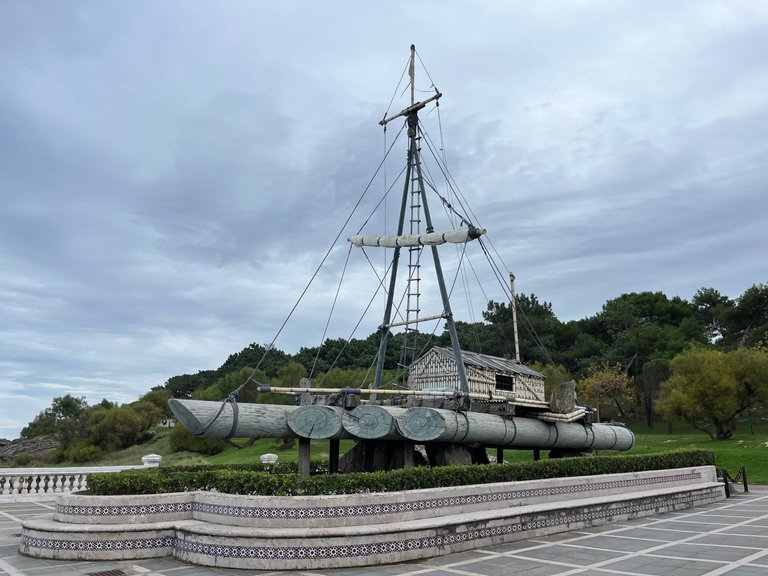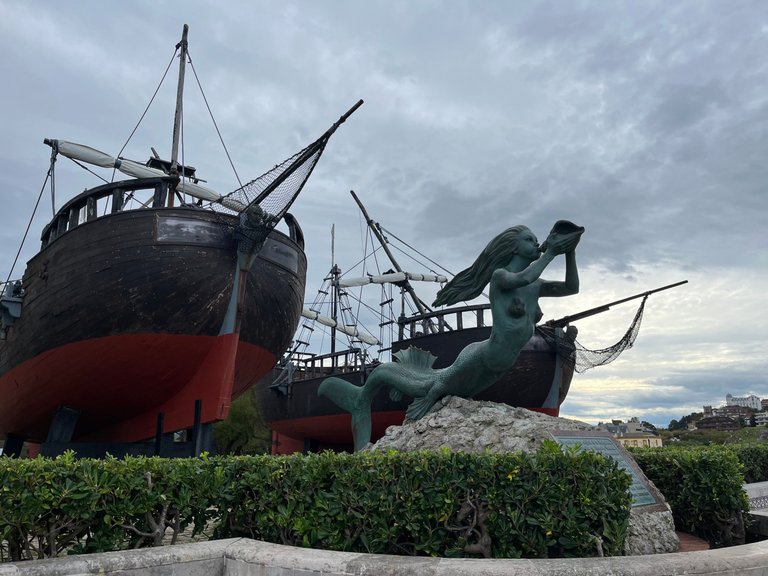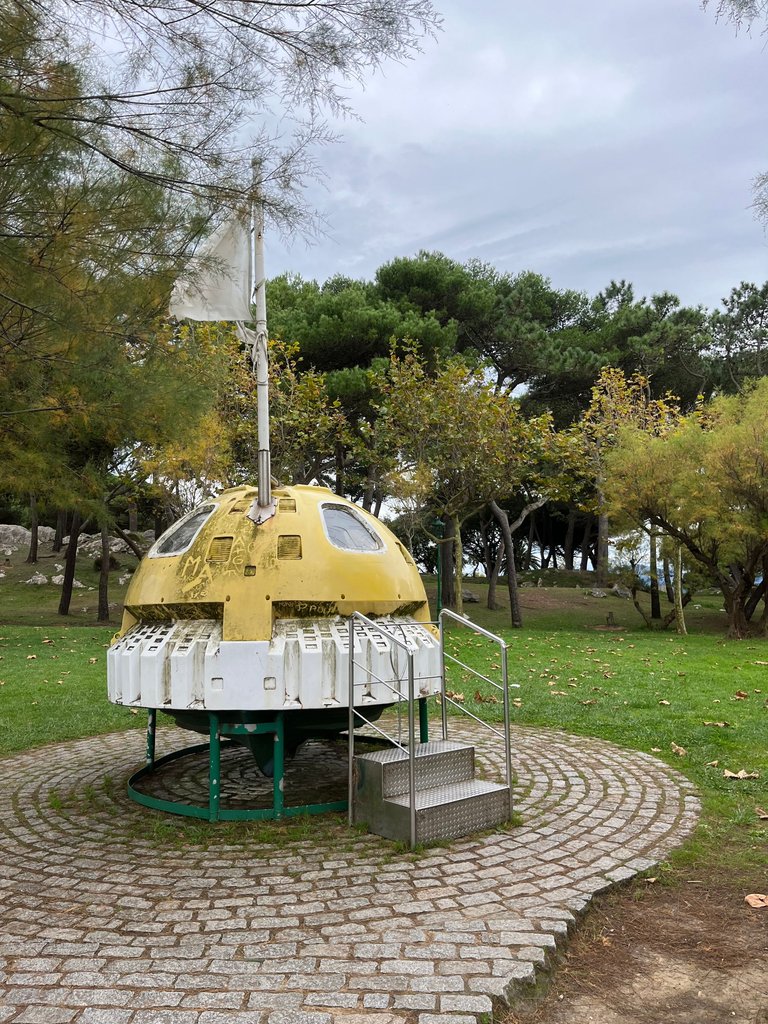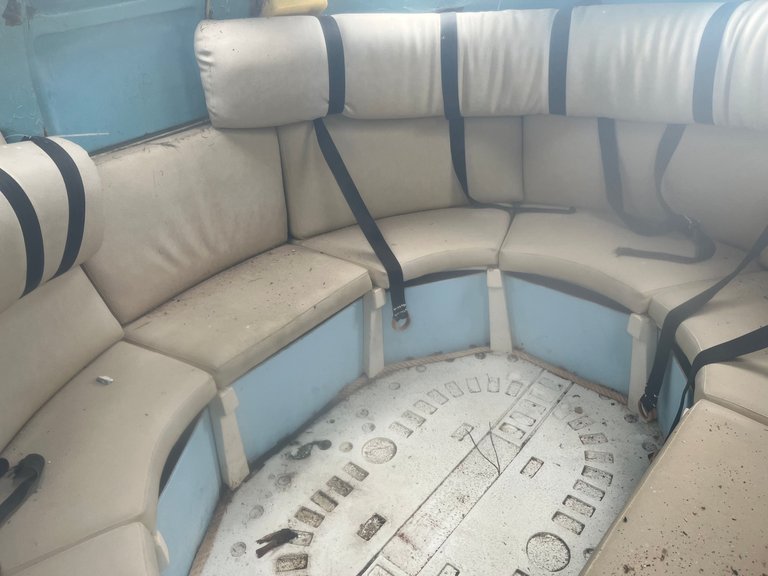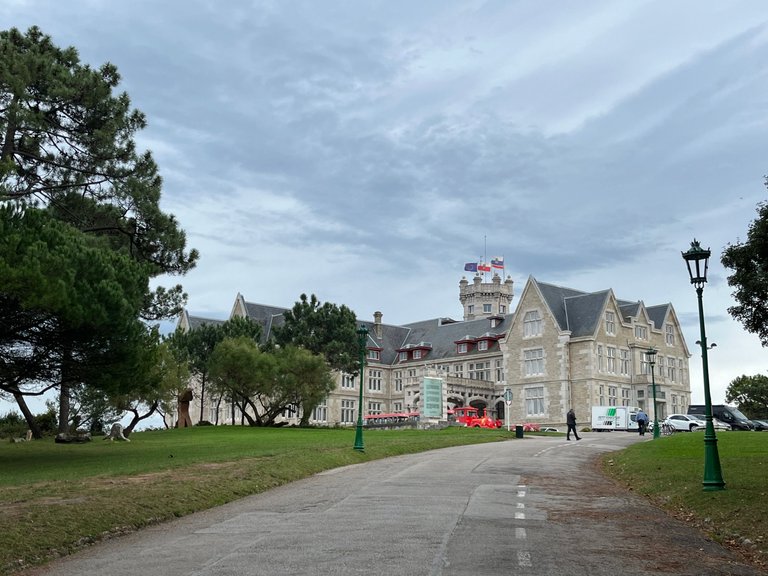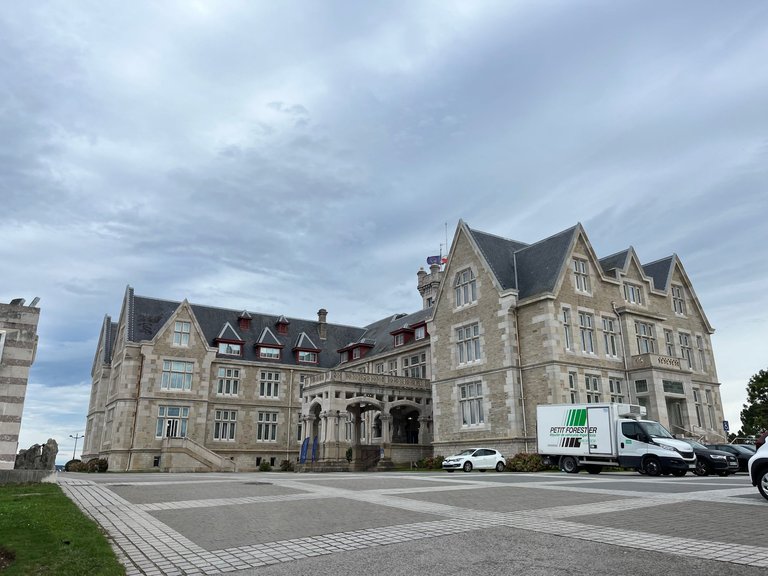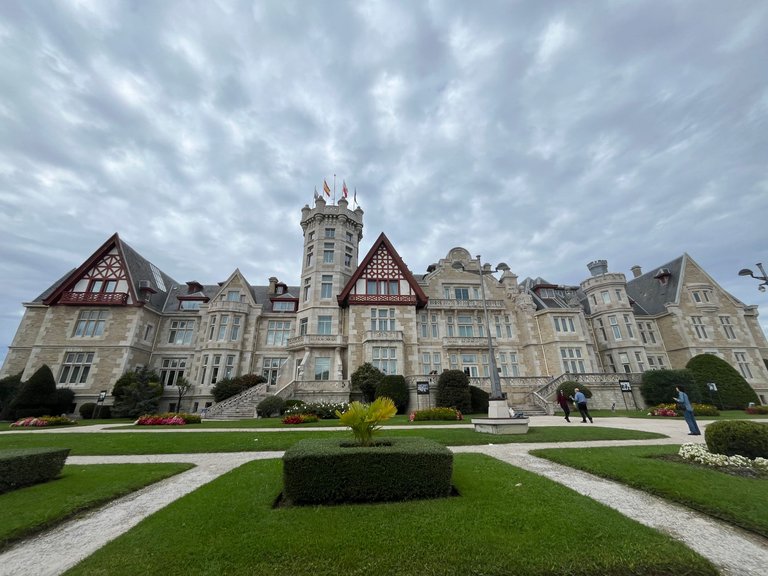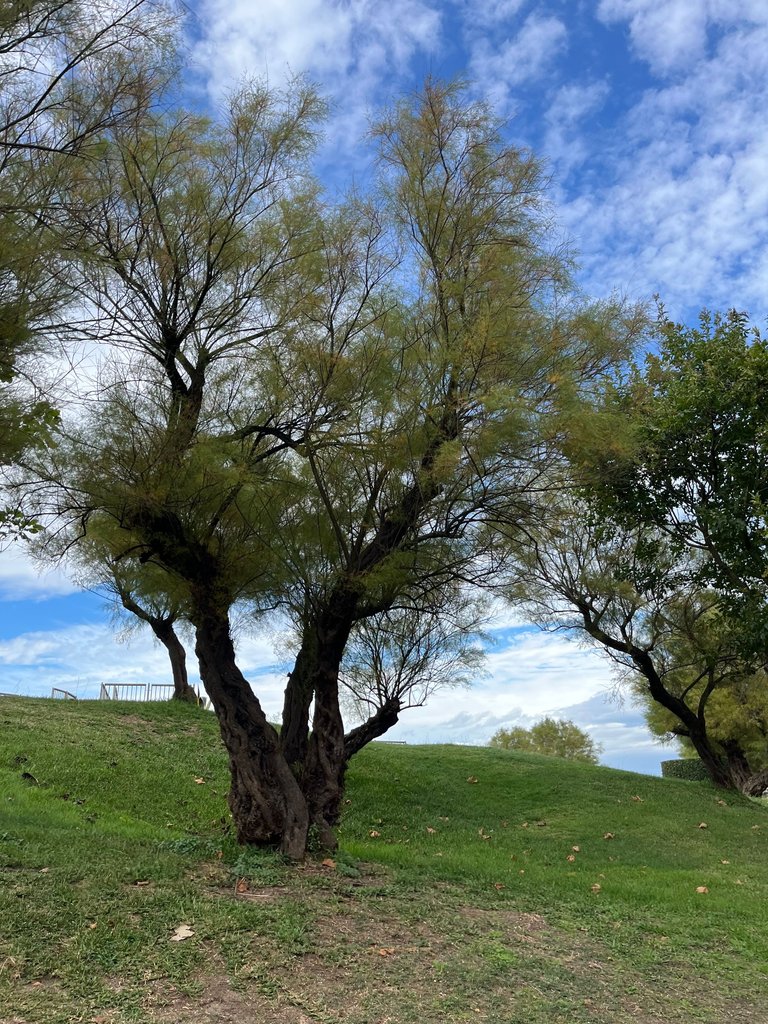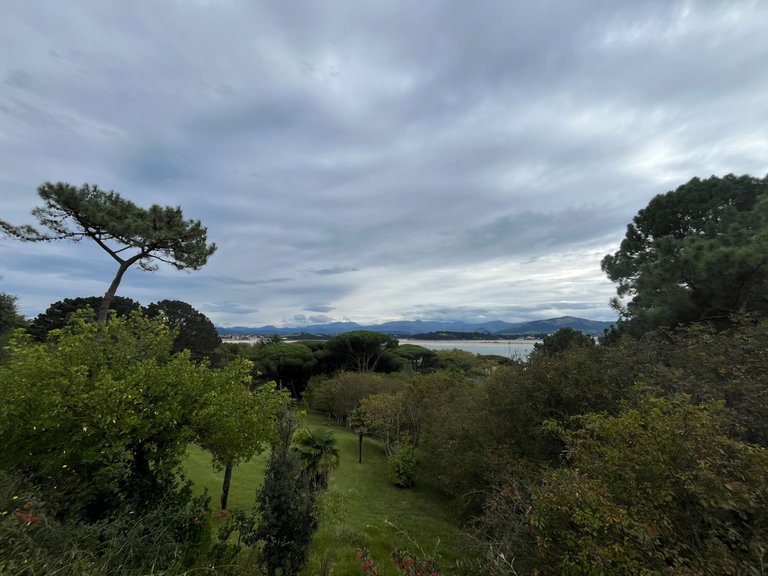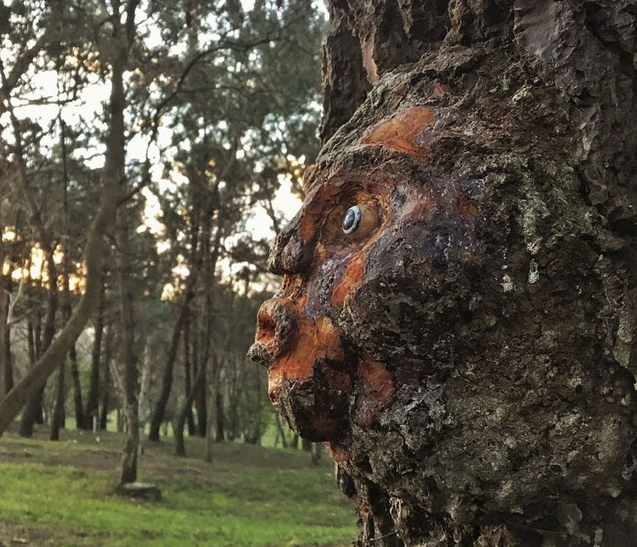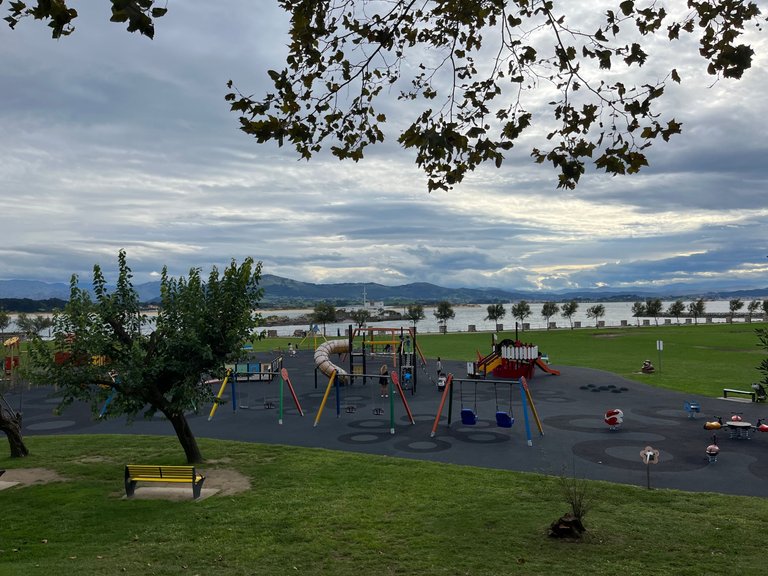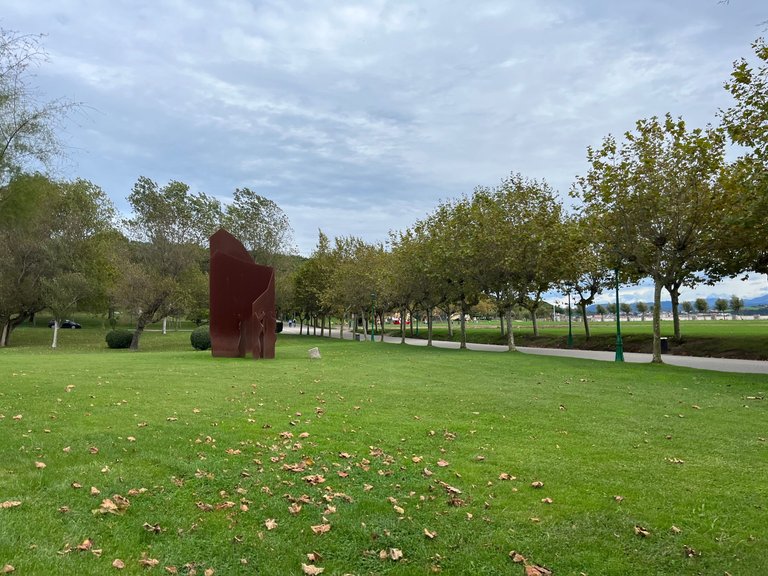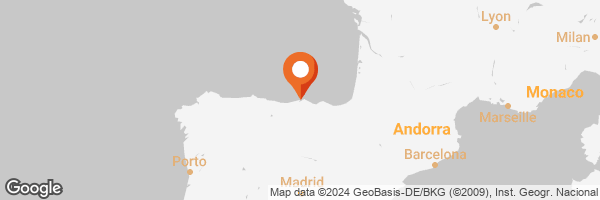Español
Hola amigos,
Los que me conocéis sabéis que soy un enamorado de Cantabria (España) y lo soy porque en cada ciudad y pequeño pueblo me encuentro lugares extraordinarios de los que disfruto visitando y aún más escribiendo sobre ellos.
En la última visita a tierras cántabras, disfrute de la ciudad de Santander con su espléndida playa del sardinero y principalmente con la visita que realicé al Real Sitio de la Magdalena que es un gran espacio verde de nada menos que 25 hectáreas que encierra en su interior varios lugares de obligada visita si uno está en la ciudad de Santander.
El acceso a la península de la Magdalena es total libre y gratuito, por lo que se agradece hoy en día a la hora de hacer turismo, siendo el horario de visita de 8 a 22:00 h en el verano y el resto del año de 9:00 a 20:00 h.
En mi caso, como la visita ha sido en octubre me encontré con poca afluencia de personas y pude aparcar muy cómodamente en el aparcamiento de una playa colindante a la península desde la que ya pude divisar alguna de las sorpresas que me deparaba este lugar al ver unos barcos expuestos en la parte izquierda de la península.
Al entrar en el recinto uno encontrará un panel informativo del lugar y uno tendrá que tomar la decisión de tomar un camino u otro para ir rodeando la península, ya que la mejor forma de visitarla es hacerlo a pie dando un paseo.
Aunque otras opciones como la de visitarlo con un tren turístico también es una opción, pero mi experiencia con estos transportes es que uno va a la velocidad que quiere otro y a mí me gusta detenerme en lo que más me gusta y detenerme menos en otras cosas siendo libre en mi visita.
Parque Marino
A diferencia de lo indicado e intrigado por los barcos que había visto desde fuera de la península realicé la visita a la península siguiendo las agujas del reloj por lo que me encontré en primer lugar con una sucesión de estanques de diversos tamaños que albergan en su interior distintas especies marinas.
Entre las especies marinas de este parque puedo destacar aquellas que estaban visibles como son los leones marinos y las focas. Las cuales estaban cada unas en sus estanques, dándose unos buenos chapuzones nadando con total normalidad ante la mirada de los turistas.
Otras especies de este parque son una especie de pequeños pingüinos, pero normalmente estos se esconden entre las grietas de la roca y son más complicados de ver.
Y eso que mire bien tanto dentro del recinto como en la parte exterior, mientras que contemplaba a lo lejos la ciudad de Santander.
Museo El hombre y la mar
Tras divertirme viendo como nadaban y juegan las focas y los leones marinos, me fui directo al lugar que más me gustó de la península, que es el museo al aire libre "El hombre y la mar".
Este enclave, donde sobresalen por encima de todo tres galeones, homenajea las nueve expediciones realizadas entre 1966 y 1992 por el navegante santanderino Vital Alsar Ramirez.
Pero por impactante me quedo con la balsa de madera con la que atravesó el océano Pacífico en 1970. Toda una Azaña su viaje desde Ecuador hasta Australia en esta embarcación durante seis meses.
Siendo también de gran belleza la escultura de una sirena en frente de los galeones.
Y como momento divertido descubrir la que podría ser la nave con la que Goku vino en la tierra en el anime japonés, pero que en la realidad es una nave salvavidas.
Palacio de la Magdalena
El punto de mayor interés por su esplendor y tamaño es el palacio de la Magdalena.
Este edificio fue construido a principos del siglo XX para albergar a la familia real española como residencia vacacional en época de Alfonso XIII.
Posteriormente con la llegada de la republica y la posterior dictadura no fue utilizado hasta los años 80 por la familia real. Aunque poco tiempo despues fue vendido de nuevo a la ciudad de Santander.
Actualmente este palacio es sede de la Universidad Internacional Menéndez Pelayo y también acoge congresos, reuniones y eventos.
Recorriendo el parque con esculturas de madera
Durante mi regreso hacia la salida/entrada del recinto me encantó trascurrir por diversos caminos entre los árboles.
Sobre todo porque me fui encontrando con esculturas realizadas sobre aquellos árboles que ya habían perdido la vida, dotándoles de una segunda vida como obras de arte.
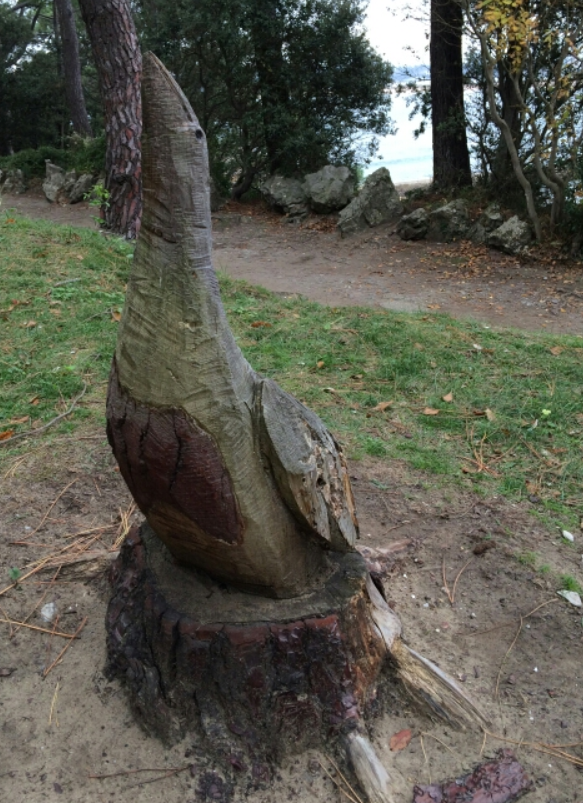
Siendo esta cara esculpida sobre un pino la que más me impresionó.
Parque infantil, Escultura de Félix Rodríguez de la Fuente
Por último, antes de salir del recinto pude ver que el ayuntamiento de Santander han pensado en todo a la hora de dotar a este lugar de lo mejor para todas la edad ya que hay un gran parque infantil.
A su vez, hay una gran cantidad de zonas verdes donde me pude imaginar leyendo un libro en los meses de verano a la sombra de alguno de los árboles.
O bien disfrutando de un baño en la Playa de Bikini, que es el nombre de la playa de esta península.
Todo ello siendo vigilado por el gran naturista Félix Rodríguez de la Fuente, que era un enamorado de Cantabria y un gran defensor de la naturaleza y del lobo ibérico.
Espero que os haya gustado este lugar de la bonita ciudad de Santander.
Un saludo.
English
Hello friends,
Those of you who know me know that I am in love with Cantabria (Spain) and I am so because in every city and small town I find extraordinary places that I enjoy visiting and even more I enjoy writing about them.
In my last visit to Cantabria, I enjoyed the city of Santander with its splendid Sardinero beach and mainly with the visit I made to the Real Sitio de la Magdalena which is a large green space of no less than 25 hectares that encloses in its interior several places of obligatory visit if one is in the city of Santander.
Access to the Magdalena peninsula is totally free and free of charge, which is a great advantage nowadays when it comes to sightseeing. The opening hours are from 8am to 10pm in the summer and the rest of the year from 9am to 8pm.
In my case, as the visit was in October, there were not many people and I was able to park very comfortably in the car park on a beach adjoining the peninsula from where I could already make out some of the surprises that this place had in store for me when I saw some boats on display on the left-hand side of the peninsula.
On entering the enclosure you will find an information panel about the place and you will have to decide which way to go around the peninsula, as the best way to visit it is on foot, taking a stroll.
Although other options such as visiting it with a tourist train is also an option, but my experience with these transports is that one goes at the speed that another one wants and I like to stop at what I like the most and stop less at other things, being free in my visit.
Marine Park
Contrary to what was indicated and intrigued by the boats that I had seen from outside the peninsula, I visited the peninsula clockwise, so I first found a succession of ponds of various sizes that house different marine species.
Among the marine species in this park I can highlight those that were visible, such as the sea lions and seals. Each one of them was in its own pond, having a good swim in front of the tourists' eyes.
Other species in this park are a kind of small penguins, but they usually hide in the crevices of the rock and are more difficult to see.
I had a good look both inside the enclosure and outside, while contemplating the city of Santander in the distance.
Man and the Sea Museum
After having fun watching the seals and sea lions swimming and playing, I went straight to the place I liked the most on the peninsula, which is the open-air museum ‘Man and the Sea’.
This enclave, where three galleons stand out above all, pays homage to the nine expeditions carried out between 1966 and 1992 by the Santander-born navigator Vital Alsar Ramirez.
But the wooden raft with which he crossed the Pacific Ocean in 1970 is most impressive. His six-month voyage from Ecuador to Australia on this vessel was a real Azaña.
Also of great beauty is the sculpture of a mermaid in front of the galleons.
And as an amusing moment to discover what could be the ship with which Goku came to earth in the Japanese anime, but which in reality is a lifeboat.
Magdalena Palace
The most interesting point for its splendour and size is the Magdalena Palace.
This building was built at the beginning of the 20th century to house the Spanish royal family as a holiday residence during the reign of Alfonso XIII.
Este edificio fue construido a principos del siglo XX para albergar a la familia real española como residencia vacacional en época de Alfonso XIII.
Posteriormente con la llegada de la republica y la posterior dictadura no fue utilizado hasta los años 80 por la familia real. Aunque poco tiempo despues fue vendido de nuevo a la ciudad de Santander.
Later, with the arrival of the Republic and the subsequent dictatorship, it was not used by the royal family until the 1980s.However, shortly afterwards it was sold again to the city of Santander.
Nowadays this palace is the headquarters of the Menéndez Pelayo International University and also hosts congresses, meetings and events.
Walking through the park with wooden sculptures.
On my way back to the exit/entrance of the park, I was delighted to walk along various paths through the trees.
Above all because I came across sculptures made on trees that had already lost their lives, giving them a second life as works of art.

This face sculpted on a pine tree was the one that impressed me the most.
Playground, Sculpture by Félix Rodríguez de la Fuente
Finally, before leaving the site I could see that the Santander City Council have thought of everything when it comes to providing this place with the best for all ages as there is a large children's playground.
At the same time, there are a lot of green areas where I could imagine myself reading a book in the summer months in the shade of one of the trees.
Or enjoying a swim at Bikini Beach, which is the name of the beach on this peninsula.
All of this under the watchful eye of the great naturist Félix Rodríguez de la Fuente, who was in love with Cantabria and a great defender of nature and the Iberian wolf.
I hope you liked this place in the beautiful city of Santander.
Best regards.


